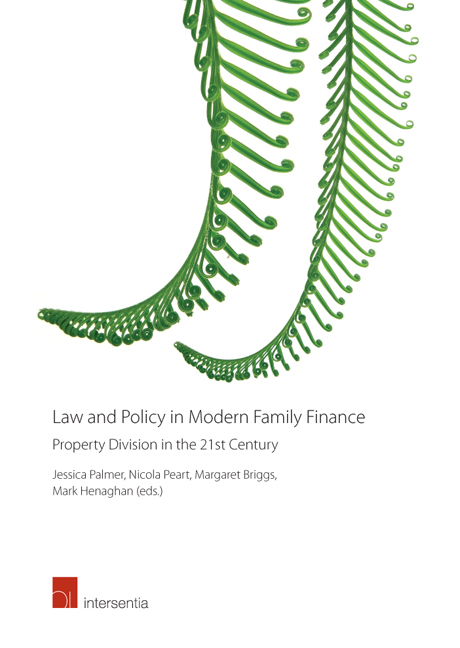Book contents
- Frontmatter
- Foreword
- Acknowledgements
- Contents
- Table of Cases
- List of Contributors
- Chapter 1 Introduction
- PART I WHO SHOULD BE COVERED BY A PROPERTY SHARING REGIME?
- Chapter 2 Reconsidering Family Property Law in the Post-Marital Age
- Chapter 3 Which Relationships Should be Included in a Property Sharing Scheme?
- Chapter 4 Children's Interests in Division of Property on Relationship Breakdown
- Chapter 5 Family Finances on Death of a Spouse or Partner
- Chapter 6 A Lament for ‘Testator's Family Maintenance’ – A Good Idea Gone Wrong? Australian Reflections
- PART II WHAT PROPERTY SHOULD BE COVERED BY A PROPERTY SHARING REGIME?
- PART III HOW SHOULD PROPERTY BE SHARED AT THE END OF A RELATIONSHIP?
- Index
Chapter 3 - Which Relationships Should be Included in a Property Sharing Scheme?
from PART I - WHO SHOULD BE COVERED BY A PROPERTY SHARING REGIME?
Published online by Cambridge University Press: 29 September 2018
- Frontmatter
- Foreword
- Acknowledgements
- Contents
- Table of Cases
- List of Contributors
- Chapter 1 Introduction
- PART I WHO SHOULD BE COVERED BY A PROPERTY SHARING REGIME?
- Chapter 2 Reconsidering Family Property Law in the Post-Marital Age
- Chapter 3 Which Relationships Should be Included in a Property Sharing Scheme?
- Chapter 4 Children's Interests in Division of Property on Relationship Breakdown
- Chapter 5 Family Finances on Death of a Spouse or Partner
- Chapter 6 A Lament for ‘Testator's Family Maintenance’ – A Good Idea Gone Wrong? Australian Reflections
- PART II WHAT PROPERTY SHOULD BE COVERED BY A PROPERTY SHARING REGIME?
- PART III HOW SHOULD PROPERTY BE SHARED AT THE END OF A RELATIONSHIP?
- Index
Summary
INTRODUCTION
It is common knowledge that many Western jurisdictions have undergone rapid social change since the 1970s, not least in the context of domestic relationships. Declining marriage rates, high divorce rates, more people living together outside marriage, more single parent families, more childless couples, and more blended families are just some of the influences that have weakened the dominance of the traditional nuclear family.
States have responded in a variety of ways to the shift ing demographic trends in their populations, applying different inclusion and exclusion criteria to the types of domestic relationships that are subject to their family property laws. Some jurisdictions continue to regulate the property affairs only of those couples that formally marry, although an increasing number now extend the notion of the ‘formal relationship‘ to registered civil partnership as well as marriage. Other jurisdictions take a more interventionist approach by recognising unregistered cohabitants whose informal relationships function in a ‘marriage-like‘ way, and a few jurisdictions have moved beyond the paradigm of the intimate dyadic relationship by recognising certain platonic domestic relationships such as those between family members, companions, or home sharers.
There are also key jurisdictional differences regarding the types of property arrangements that should apply, involving important questions about the sorts of property that should be subject to sharing between partners and how that property should be shared. These matters are, of necessity, connected to the question of what types of domestic relationships should be recognised, resulting in a complex three-dimensional pattern of variables across different legal systems.
This chapter considers two different methods used to identify the relationships that qualify for relationship property sharing – the ‘formal‘ approach premised on relationship registration, and the ‘functional‘ approach based on how the couple's relationship operates in practical terms. Drawing on the laws in countries including England, Australia, and New Zealand, this chapter suggests that neither approach is ideal – the formal approach no longer accurately reflects modern social trends, excludes too many couples from property sharing, and routinely disadvantages the more financially vulnerable party; the more inclusive functional approach is also open to criticism on grounds of uncertainty because it is not always clear whether a couple is in the sort of informal relationship that justifies property sharing.
- Type
- Chapter
- Information
- Law and Policy in Modern Family FinanceProperty Division in the 21st Century, pp. 37 - 64Publisher: IntersentiaPrint publication year: 2017

